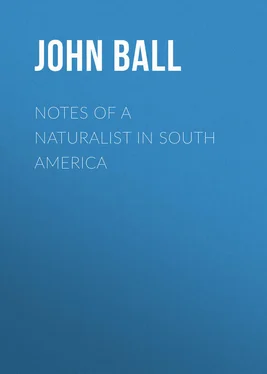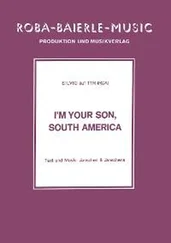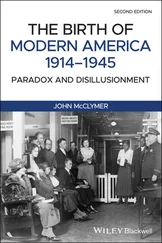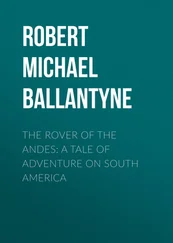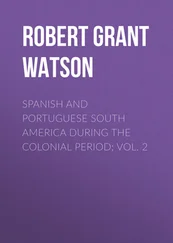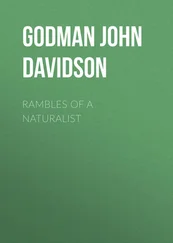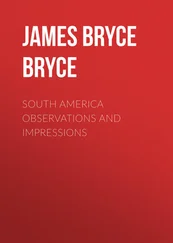John Ball - Notes of a naturalist in South America
Здесь есть возможность читать онлайн «John Ball - Notes of a naturalist in South America» — ознакомительный отрывок электронной книги совершенно бесплатно, а после прочтения отрывка купить полную версию. В некоторых случаях можно слушать аудио, скачать через торрент в формате fb2 и присутствует краткое содержание. Жанр: foreign_antique, foreign_prose, на английском языке. Описание произведения, (предисловие) а так же отзывы посетителей доступны на портале библиотеки ЛибКат.
- Название:Notes of a naturalist in South America
- Автор:
- Жанр:
- Год:неизвестен
- ISBN:нет данных
- Рейтинг книги:4 / 5. Голосов: 1
-
Избранное:Добавить в избранное
- Отзывы:
-
Ваша оценка:
- 80
- 1
- 2
- 3
- 4
- 5
Notes of a naturalist in South America: краткое содержание, описание и аннотация
Предлагаем к чтению аннотацию, описание, краткое содержание или предисловие (зависит от того, что написал сам автор книги «Notes of a naturalist in South America»). Если вы не нашли необходимую информацию о книге — напишите в комментариях, мы постараемся отыскать её.
Notes of a naturalist in South America — читать онлайн ознакомительный отрывок
Ниже представлен текст книги, разбитый по страницам. Система сохранения места последней прочитанной страницы, позволяет с удобством читать онлайн бесплатно книгу «Notes of a naturalist in South America», без необходимости каждый раз заново искать на чём Вы остановились. Поставьте закладку, и сможете в любой момент перейти на страницу, на которой закончили чтение.
Интервал:
Закладка:
Our detention in quarantine might have been prolonged but for the fortunate circumstance that the contents of the mail-bags carried by the Islay were at this moment the object of anxious curiosity to the Chilian authorities, and to the representatives of foreign powers. The position of affairs was already sufficiently critical, and the attitude recently assumed by the Government of the United States had added a new element of uncertainty to the existing difficulties. Mr. Hurlbut, the last American representative, had died, and Mr. Trescott, who supplied his place, was ostensibly charged with the attempt to bring about a peace between Chili and Peru, but was supposed to be chiefly intent on extricating his Government from a position into which it had been led by a series of proceedings which had neither raised the national reputation nor secured the good-will of either Chili or Peru.
While we lay off the harbour, watched day and night by the crew of a launch stationed beside us to prevent communication with the land, we received three successive visits from the officers of the American man-of-war lying in the harbour, who approached near enough to hold conversation with our captain. The message was a request, finally conveyed in somewhat imperious terms, that the dispatches addressed to the American envoy should at once be delivered. The American foreign office is not, I believe, accustomed to forward diplomatic dispatches in a separate bag, but merely uses the ordinary post. Our captain properly declined to take the responsibility of opening the mail-bags, which he was bound to deliver intact to the postal authorities as soon as we were admitted to pratique. The result was that on Monday, just as we were beginning to be seriously uneasy at the prospect of a long detention, a steam launch was seen to approach, having a number of officials on board. A seemingly interminable conversation between these and the captain and medical officer of our ship finally resulted in a Chilian medical man coming on board to make a careful examination of the ship, the crew, and the passengers. After we had been duly marshalled and inspected – the first-class passengers on the spar-deck, the others on the main-deck – the welcome announcement, “Admitted to pratique,” ran through the ship. Not much time was lost in moving up to the proper moorings in the harbour, some two miles distant, and about noon we were set on land close to the custom-house.
LANDING AT CALLAO.
The boatmen, the porters, and the nondescript hangers-on about the quays of a port, formed a strange and motley assemblage, in whose countenances three very distinct types of humanity – the European, the negro, and the South American Indian – were mingled in the most varied proportions, scarcely one denoting an unmixed origin. The arrangements at Callao are convenient for strangers. The custom-house officers, though unbribed, gave no trouble, and the rather voluminous luggage of six English passengers was entrusted to a man who undertook for ten soles (about thirty-three shillings) to convey the whole to the chief hotel in Lima. No time was left to see anything of Callao. A train was about to start; and in half an hour we were carried over the level space – about seven and a half miles – that separates Lima from the port of Callao.
Occupied by the forces of her victorious rival, and shorn of most of the almost fabulous wealth that once enriched her inhabitants, Peru can, even in her present ruined state, show a capital city that impresses the stranger. It is true that the buildings have no architectural merit, that most of the streets are horribly ill-paved, and that at present there is little outward appearance of wealth in the thoroughfares; in spite of all this the general aspect is novel and pleasing. Although violent earthquakes have rarely occurred in this region, slight shocks are very frequent, and remind the inhabitants that formidable telluric forces are slumbering close at hand. Hence, as a rule, the houses have only a single floor above the ground, and cover a proportionately large space. As in Southern Spain, all those of the better class enclose a patio , or courtyard, partly occupied by tropical trees or flowering shrubs. Fronting the street, or the plaza , a long projecting balcony, enclosed with glass, enables the inmates to enjoy that refuge from absolute vacancy which is afforded by gazing at the passers-by, and which seems to supply the place of occupation to much of the population even in Southern Europe.
With scarcely an exception, the numerous churches are vile examples of debased renaissance architecture, fronted with stucco ornamentation in great part fallen to decay. Not long before our arrival, I believe under the Chilian administration, they had been all freshly covered with whitewash, cut into rectangular spaces by broad bands of bright blue. In the streets near the great plaza there was much apparent animation during the day; but the shops were closed an hour before nightfall, and after dark the city was hushed into unnatural silence. The fair Limeñas , as to whose charms travellers have been eloquent, and who used to throng the public drives and walks towards sunset, were no longer to be seen. To exhibit themselves would be to display indifference to the misfortunes of their country. Some might be observed, indeed, during the morning hours, plainly dressed in black, going either to church or on some business errand; but they were so closely wrapped up in a manta as to be completely disguised.
CHOICE OF A ROUTE TO THE ANDES.
On landing in Peru, the one question which completely engrossed my mind was whether or not it would be possible for me, in the present state of the country, to reach the upper region of the Andes.
To a naturalist this great chain must ever be the dominant feature of the South American continent. To its structure and its flora and fauna are attached questions of overwhelming importance to the past history of our planet, and, however little a man may hope to effect during a flying visit, the desire to gain that degree of acquaintance which actual observation alone can give becomes painfully intense. I was aware that what had formerly been a long and rather laborious journey had of late years been reduced to a mere excursion by the construction of two lines of railway, leading from the sea-coast to the upper region. That which, if free to choose, I should have preferred starts from the coast at Mollendo, and, passing the important town of Arequipa, traverses the crest of the Cordillera, and has its terminus at Puno, on the Lake of Titicaca, in the centre of the plateau which lies between the two main ridges of the Andes. The region surrounding this great lake, which here divides Peru from Bolivia, must offer objects of interest only too numerous and too engrossing for a traveller whose time is counted by days. Although the level of the lake is some 12,800 feet above the sea, the peaks of Sorata rise above its eastern shores to a further height of nearly 10,000 feet; and lake steamers give access to most of the inhabited places on its shores – no slight matter when it is remembered that the lake measures more than a hundred miles in length.
The second line, which, starting from the city of Lima, is carried nearly due east along the valley of the Rimac, was designed to open communication by the most direct route between the capital and the fertile region on the eastern slopes of the Andes – called in Peru the Montaña – as well as with the rich silver region of Cerro de Pasco. The crest of the Cordillera, or western ridge of the Andes, is scarcely eighty miles from Lima in a direct line, but the most practicable pass is somewhat higher than the summit of Mont Blanc. The road was to pierce the pass by a tunnel 15,645 feet above the sea-level, and thence to descend to the town of Oroya on the high plateau that divides the two main ridges. As the line was laid out, the distance from Lima to the summit-level was only 97 miles, and that to Oroya 129 miles.
Читать дальшеИнтервал:
Закладка:
Похожие книги на «Notes of a naturalist in South America»
Представляем Вашему вниманию похожие книги на «Notes of a naturalist in South America» списком для выбора. Мы отобрали схожую по названию и смыслу литературу в надежде предоставить читателям больше вариантов отыскать новые, интересные, ещё непрочитанные произведения.
Обсуждение, отзывы о книге «Notes of a naturalist in South America» и просто собственные мнения читателей. Оставьте ваши комментарии, напишите, что Вы думаете о произведении, его смысле или главных героях. Укажите что конкретно понравилось, а что нет, и почему Вы так считаете.
